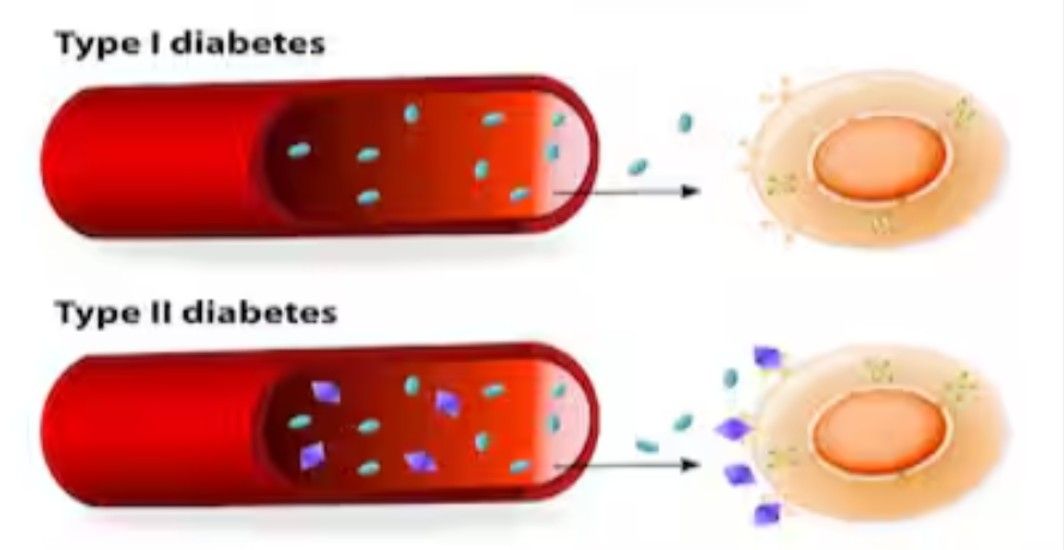Diabetes Management
Can Diabetes Cause Muscle Thinning Over Time?
3 min read
By Apollo 24|7, Published on - 08 November 2023, Updated on - 07 August 2024
Share this article
0
0 like

Diabetes is a complex metabolic condition that can have various effects on the body, including changes in body composition. One of the observations made by some individuals with diabetes is the thinning of their legs over time. This phenomenon is often associated with specific factors related to diabetes, but it's essential to understand the underlying causes and consider how to manage or mitigate these changes.
Muscle Atrophy
Individuals with poorly controlled diabetes may experience muscle wasting (thinning) or atrophy. This is often due to prolonged high blood sugar levels, which can lead to the breakdown of muscle tissue.
Muscle atrophy can result from reduced glucose uptake by muscle cells, and altered protein metabolism and function. As a consequence, the muscles in the legs may gradually become thinner and weaker.
Peripheral Neuropathy
Peripheral neuropathy is a common diabetes complication that affects the nerves, particularly in the extremities, including the legs.
Nerve damage caused by diabetes can lead to muscle weakness, loss of coordination, and decreased physical activity. When individuals are less active due to neuropathy-related discomfort or pain, their leg muscles may begin to weaken over time.
Vascular Changes
Diabetes can impact the blood vessels, leading to poor circulation and reduced blood flow to the legs.
Inadequate blood supply means that less oxygen and nutrients reach the leg muscles. This can contribute to muscle wasting and, subsequently, thinner legs.
Inflammation and Fibrosis
Chronic inflammation is common in diabetes and can result in fibrosis or the formation of excess fibrous connective tissue.
Inflammation and fibrosis can affect skeletal muscle structure and function, leading to muscle wasting of limbs, especially legs.
Weight Loss
In some cases, individuals with diabetes may experience unintentional weight loss, which can contribute to thinner legs.
Weight loss may result from poorly controlled diabetes, decreased appetite, or other health issues. The loss of muscle and fat mass can lead to a reduction in leg size.
It's important to note that not everyone with diabetes will experience leg thinning, and the extent of these changes can vary among individuals. However, it's crucial to focus on diabetes management and lifestyle factors to help prevent or alleviate these effects:
- Blood Sugar Control: Maintaining target blood sugar levels through proper diabetes management is essential to reduce the risk of muscle atrophy and neuropathy.
- Physical Activity: Engaging in regular physical activity can help prevent muscle atrophy and promote leg strength. It can also improve circulation and alleviate neuropathy.
- Resistance training: Exercise has proven particularly valuable in promoting increased muscle mass and can minimise or prevent the effects of diabetes on skeletal muscle.
- Healthy Diet: Proper nutrition, including adequate protein intake, is crucial for preserving muscle mass.
- Consulting Healthcare Providers: Individuals with diabetes should communicate any concerning changes in their legs or overall health with their healthcare providers for a comprehensive evaluation and personalised guidance.
Conclusion
Muscle thinning or weakness in diabetes can result from a combination of factors, including Skeletal muscle atrophy, peripheral neuropathy, vascular changes, inflammation, and weight loss. Managing diabetes effectively through blood sugar control, physical activity especially resistance training, a healthy diet, and regular medical check-ups can help mitigate these effects and promote overall well-being.
Diabetes Management
Consult Top Diabetologists
View AllLeave Comment
Recommended for you

Diabetes Management
Does Unexplained Weight Loss Indicate Diabetes?
Unintentional weight loss can signal diabetes, especially type 1 or poorly controlled type 2. It occurs as the body breaks down fat and muscle for energy due to ineffective glucose use. Proper management, including blood sugar monitoring, balanced diet, exercise, and medications, can address this. Recognising this link aids early diagnosis and effective management, as weight loss may accompany other diabetes symptoms like increased thirst and frequent urination.

Diabetes Management
The Commonalities Between Type 1 and Type 2 Diabetes
If you're wondering about the similarities between Type 1 and Type 2 diabetes, understand that both conditions revolve around issues with insulin and blood sugar regulation. Common symptoms like increased thirst, fatigue, and blurred vision are found in both types. Remember, proper management is key in both instances to prevent serious health complications.

Diabetes Management
Understanding the Impact of Alcohol on Type 2 Diabetes
Living with type 2 diabetes doesn't necessarily mean you have to eliminate alcohol from your life entirely. However, understanding how alcohol impacts your blood sugar levels and practising moderation is key. Consult your doctor to tailor a plan that suits your lifestyle while prioritising effective diabetes management.
Subscribe
Sign up for our free Health Library Daily Newsletter
Get doctor-approved health tips, news, and more.
Visual Stories

8 Fruits That are Incredibly Healthy for Diabetes
Tap to continue exploring
Recommended for you

Diabetes Management
Does Unexplained Weight Loss Indicate Diabetes?
Unintentional weight loss can signal diabetes, especially type 1 or poorly controlled type 2. It occurs as the body breaks down fat and muscle for energy due to ineffective glucose use. Proper management, including blood sugar monitoring, balanced diet, exercise, and medications, can address this. Recognising this link aids early diagnosis and effective management, as weight loss may accompany other diabetes symptoms like increased thirst and frequent urination.

Diabetes Management
The Commonalities Between Type 1 and Type 2 Diabetes
If you're wondering about the similarities between Type 1 and Type 2 diabetes, understand that both conditions revolve around issues with insulin and blood sugar regulation. Common symptoms like increased thirst, fatigue, and blurred vision are found in both types. Remember, proper management is key in both instances to prevent serious health complications.

Diabetes Management
Understanding the Impact of Alcohol on Type 2 Diabetes
Living with type 2 diabetes doesn't necessarily mean you have to eliminate alcohol from your life entirely. However, understanding how alcohol impacts your blood sugar levels and practising moderation is key. Consult your doctor to tailor a plan that suits your lifestyle while prioritising effective diabetes management.


